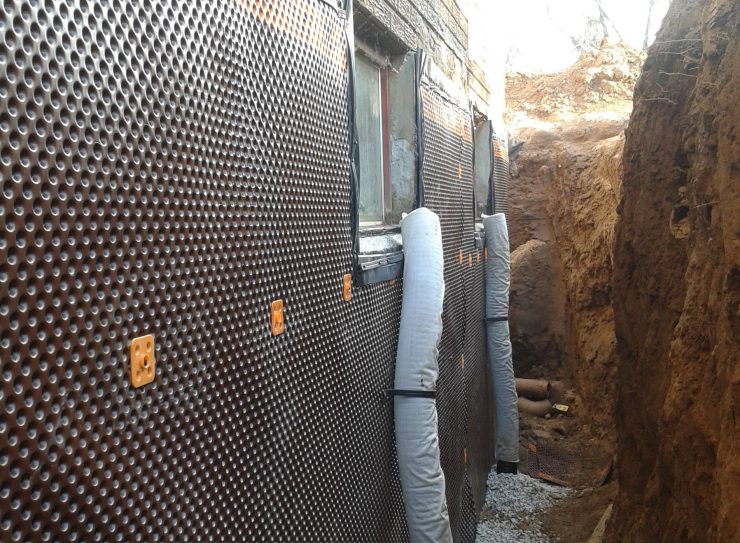Waterproofing solutions is a crucial aspect of preserving the stability and durability of every home or structure. If https://telegra.ph/Moisture-Control-Issues-for-Historic-Properties-04-10 are a homeowner seeking to protect your investment from the harmful effects of water or a builder aiming to create sustainable structures, learning how to select the best waterproofing materials is crucial. Moisture damage can lead to costly repairs, mold growth , and significant problems, rendering effective waterproofing a must for all property owners.
In this comprehensive manual, we will examine the many aspects of waterproofing, from detecting the indications that your building needs waterproofing to grasping the differences between indoor and exterior methods. We will also look into the common misconceptions surrounding waterproofing, enabling you to make educated choices. With the right knowledge and tools, you can protect your house from moisture-related problems and prevent thousands in future repairs.
Recognizing the Significance of Waterproofing
Waterproofing is essential for every home as it defends structures from moisture damage, which can lead to costly repairs and considerable loss of property value. Moisture seepage does not only pose a risk to structural soundness but also to the health of occupants, as dampness can cause fungal growth and mildew growth. By adopting effective waterproofing measures, property owners can create a solid defense against the harmful effects of water.
Ignoring waterproofing can be a expensive mistake. The unseen damage from water intrusion can lead to huge repair bills that far outstrip the initial investment in waterproofing products and solutions. For instance, neglected moisture issues in crawl spaces can compromise the foundation, resulting in serious structural problems. Thus, comprehending the imperative nature of waterproofing can save you thousands of dollars in the time ahead.
In addition, waterproofing enhances to energy savings in buildings. When exteriors, roofs, and basements are sufficiently waterproofed, they help maintain consistent indoor temperatures, reducing the necessity for unnecessary heating or cooling. This not only reduces energy bills but also improves comfort levels. Furthermore, a thoroughly safeguarded property is more robust in adverse weather conditions, ensuring enduring defense for your investment.
Main Points In Terms Of Choosing Water-Resistant Solutions
When choosing waterproofing products, the initial key consideration is the particular area you need to protect. Various surfaces, such as basements, roofs, and washrooms, have unique requirements. For example, basement waterproofing often needs solutions that can tolerate hydrostatic pressure, while roof waterproofing demands products that can endure UV damage and temperature fluctuations. Determining the exposure levels and humidity conditions of the area will assist in selecting the most effective product.
A further important factor is the type of materials used in the waterproofing solution. Look for high-quality materials that offer durability and longevity. For example, membranes and coatings should be adaptable enough to adapt to building movement while maintaining a solid barrier against water infiltration. Additionally, consider if you favor a solvent-based, water-based, or cementitious product, depending on the desired application and ecological impact.
Lastly, the ease of application is crucial. Some waterproofing products are designed for DIY use, while others may need professional installation. Think about your skill level and whether you have the tools needed for the job. It’s also smart to assess the manufacturer’s instructions and recommendations regarding application conditions, such as temperature and humidity, to ensure optimal performance.
Frequent Water-Resistance Methods and Approaches
When it comes to protecting your home from moisture issues, there are numerous efficient waterproofing methods to consider. One widely-used method is the application of waterproof membranes, which create a barrier that prevents water from penetrating surfaces such as cellars, dividers, and tops. These membranes can be fabricated from multiple materials, including elastomer, asphalt, or polyvinyl chloride, and are fitting for both interior and outside applications. Correct installation is vital to ensure that these membranes operate effectively, thus shielding your property from seepage and penetration.

Another effective technique is the use of sealant materials and coatings. These products are applied directly to areas and function as a protective layer against water. For instance, waterproofing paints can be applied to walls and roofs to prevent fungus and mildew growth, particularly in bathrooms and kitchens. Moreover, elastomeric coatings are excellent for level roofs, providing flexibility and strength to withstand severe weather conditions while keeping liquid out. Picking the suitable sealant for each specific area of your house is vital to ensure long-lasting use and enhanced protection.
For outdoor structures, consider putting in drainage systems and downspouts to divert moisture away from your land. French drains, sump pumps, and channel drains can successfully reduce the risk of flooding around bases and basements. Alongside with correct grading of the landscape, these drainage system limit the risk of penetration. Applying a comprehensive approach with these strategies ensures long-lasting protection against liquid damage, ultimately protecting you from high-priced repairs in the long run.
